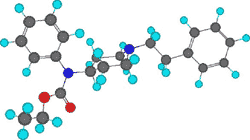
- Fentanyl is a powerful synthetic opiate analgesic similar to but more potent than morphine. It is typically used to treat patients with severe pain, or to manage pain after surgery. It is also sometimes used to treat people with chronic pain who are physically tolerant to opiates. It is a schedule II prescription drug.
- In its prescription form, fentanyl is known as Actiq, Duragesic, and Sublimaze. Street names for the drug include Apache, China girl, China white, dance fever, friend, goodfella, jackpot, murder 8, TNT, as well as Tango and Cash.
- Like heroin, morphine, and other opioid drugs, fentanyl works by binding to the body's opiate receptors, highly concentrated in areas of the brain that control pain and emotions. When opiate drugs bind to these receptors, they can drive up dopamine levels in the brain's reward areas, producing a state of euphoria and relaxation. Medications called opiate receptor antagonists act by blocking the effects of opiate drugs. Naloxone is one such antagonist. Overdoses of fentanyl should be treated immediately with an opiate antagonist.
- When prescribed by a physician, fentanyl is often administered via injection, transdermal patch, or in lozenge form. However, the type of fentanyl associated with recent overdoses was produced in clandestine laboratories and mixed with (or substituted for) heroin in a powder form.
- Mixing fentanyl with street-sold heroin or cocaine markedly amplifies their potency and potential dangers. Effects include: euphoria, drowsiness/respiratory depression and arrest, nausea, confusion, constipation, sedation, unconsciousness, coma, tolerance, and addiction.
239581since 6/17/06
|